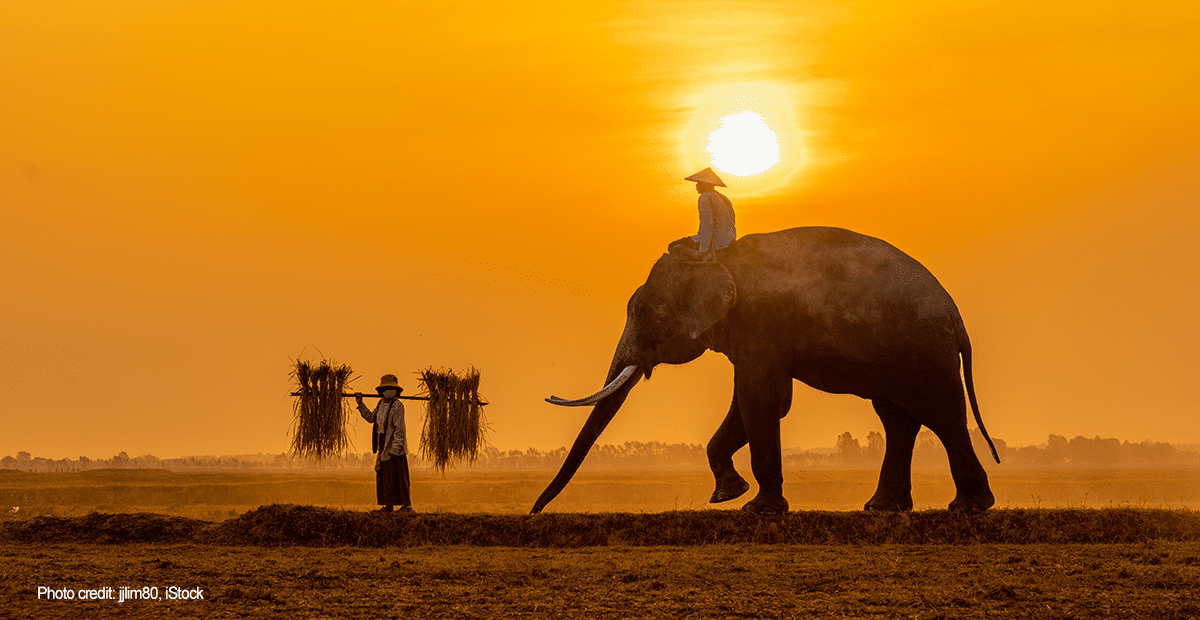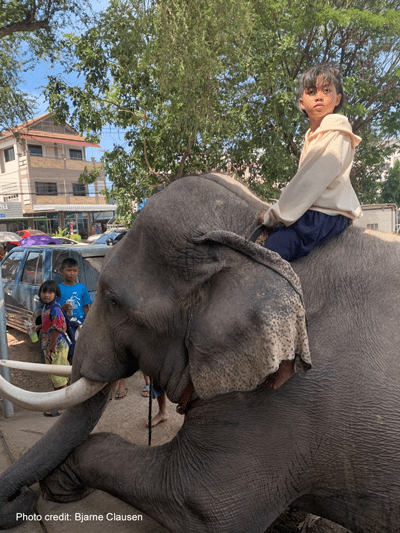
Jul 18, 2023 The Asian Elephant and its Interaction with People and the Environment
Part 1: The Asian elephant has been closely associated with people for perhaps six millennia. Still, there are conflicting views on whether the Asian elephant has been domesticated instead of being a tamed wild animal.
For example, some animal protection organizations argue that a captive Asian elephant is a wild animal that has never been truly domesticated (domestication typically involves human control of reproduction and the selection for a series of desired traits, including lower aggression and increased affiliative behaviors). However, there have been suggestions that some species are capable of self-domestication. Brian Hare and Vanessa Woods refer to human self-domestication in their book Survival of the Friendliest, arguing that modern humans outcompeted other hominids (such as the Neanderthals) because they were friendlier and more cooperative. Bonobos, who are much less aggressive than their cousins, the chimpanzees, are another candidate for self-domestication.
A recent paper in the Proceedings of the National Academy of Sciences (PNAS) now argues that elephants may be another example of a species that has “self-domesticated.” The authors of the PNAS paper report that elephants exhibit many of the features associated with self-domestication (e.g., reduced aggression, increased prosociality, extended juvenile period, increased playfulness, socially regulated cortisol levels, and complex vocal behavior). Richard Wrangham, a primatologist who has studied self-domestication, agrees that the PNAS paper provides evidence that elephants may have self-domesticated. However, he cautions that the identified genetic traits supporting the domestication hypothesis in Asian elephants described in the PNAS paper may result from the elephant’s large brains and not self-domestication.
Whatever the outcome of the elephant domestication debate, elephants have been kept in captivity in Asia for thousands of years. The Asian elephant has been deployed as a siege engine, a war animal, a status symbol, a beast of burden, and a hunting platform. The earliest evidence of elephants in captivity comes from images of soapstone seals left by the Harappan culture of the Indus Valley about 4500 years ago. In Thailand, elephants are the national animal and occupy a unique niche as sacred animals representing strength, loyalty, and longevity. They have long been associated with The Royal Family. Ganesh, an elephant-headed god, is one of the best-known deities in the Hindu pantheon. Devotion to Ganesh is widespread and extends beyond Hinduism to other Asian religious traditions.
Western animal protection groups have challenged keeping elephants in captivity, arguing that humans no longer have any essential need for the services provided by elephants. While this may be true, the claim ignores the realities on the ground today. For example, there are 10-15,000 Asian elephants currently in captivity. These animals have long lifespans. Due to local cultural prohibitions, they cannot be euthanized or slaughtered, as happened to the tens of thousands of horses in Western nations who were displaced by the internal combustion engine.
The elephant is an integral part of Thai culture and is an important talisman for the Thai Royal Family. Some Thai families have a long tradition of keeping elephants, and the animals constitute a considerable asset. Releasing thousands of captive elephants in Thailand would result in elephant suffering, harm to the limited available natural habitat, and increase human-elephant conflict. Presently, Thailand needs more natural habitat for the estimated 2,000 wild elephants.
 Western organizations are also critical of the care devoted to captive elephants in Thailand (and other South Asian nations). The long tradition of keeping elephants in captivity has resulted in elephant oversight and regulation allocation to livestock departments in Asia. As described by R.C. Lair (Gone Astray, FAO, Bangkok 1997):
Western organizations are also critical of the care devoted to captive elephants in Thailand (and other South Asian nations). The long tradition of keeping elephants in captivity has resulted in elephant oversight and regulation allocation to livestock departments in Asia. As described by R.C. Lair (Gone Astray, FAO, Bangkok 1997):
“The man–elephant relation is quite strange. While most of the domestic animals now most highly attuned to man (the dog, the cat, the water buffalo, etc.) have wild forebears which are largely untamable, many wild-caught elephants quickly and easily form intimate bonds with their keepers, even though their wild temperament has never been modified through selective breeding. Some elephants form warm and affectionate bonds with man to deceive the observer into thinking this animal must have been made thoroughly domestic. Many other elephants in domesticity, however, remain unremittingly wild, hostile to man, and ready to kill him at any chance. Clearly, a domesticated elephant is simply a wild animal in chains – but a wild animal frequently gentle and intelligent enough to serve as a trustworthy babysitter to watch over human infants.”
The very different relationships established between humans and elephants described in the above quote result in a challenging management dynamic. Because elephants are so large and powerful, they cannot be easily controlled. In Western zoos, human interaction with elephants is mainly restricted to “protected contact” to prevent harm to the caregiver. However, such restrictions are not possible in Asian families with captive elephants.
The above article is the first in a planned series on the Asian elephant. Managing elephants safely has always been a challenge for human handlers. Still, some new developments in elephant training have relied on rewards rather than punishment and domination. Finding an appropriate way forward that ensures the well-being of captive elephants, their human handlers, the communities who work with and depend on elephants, and the natural environment will take much work.


